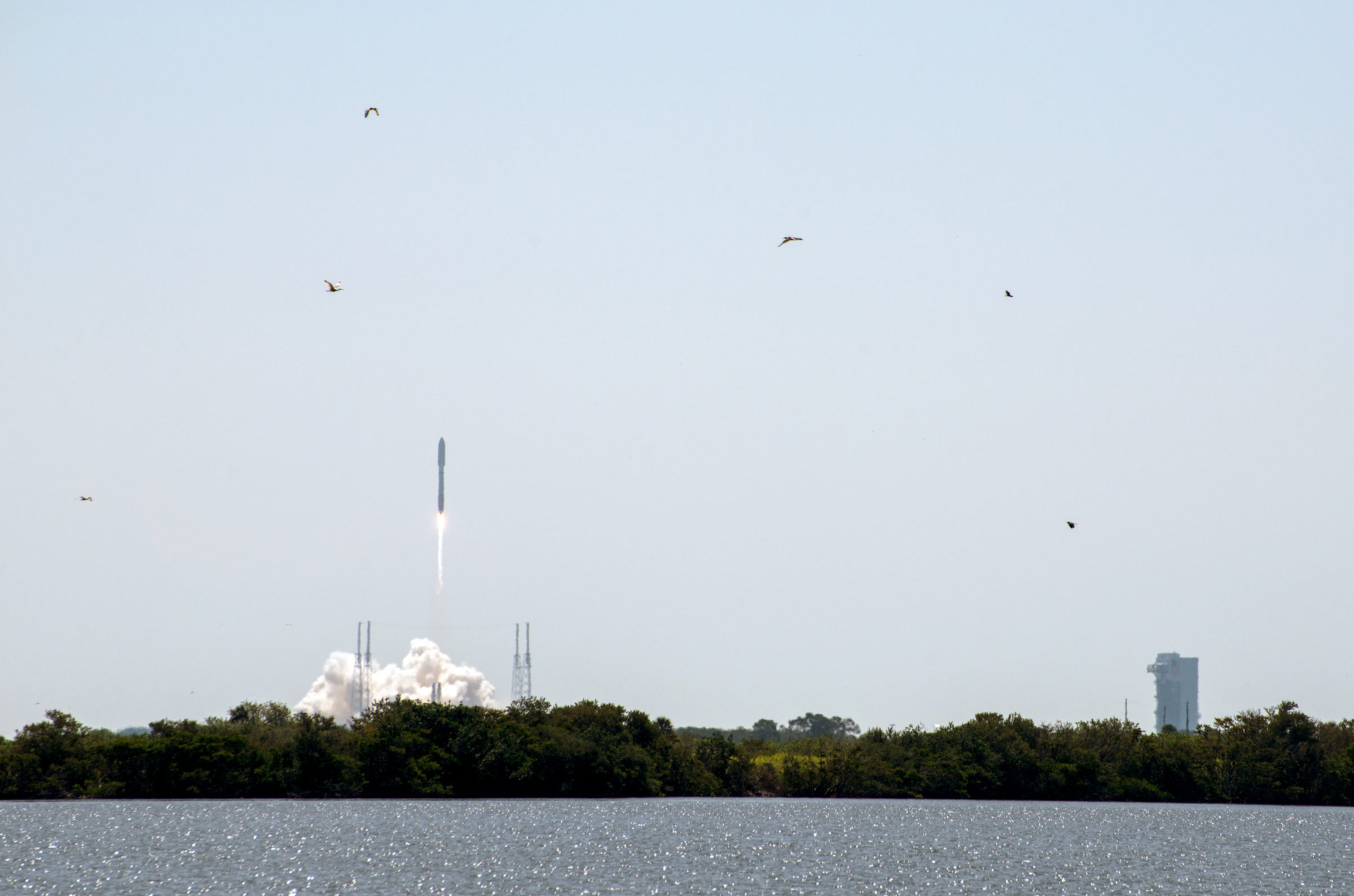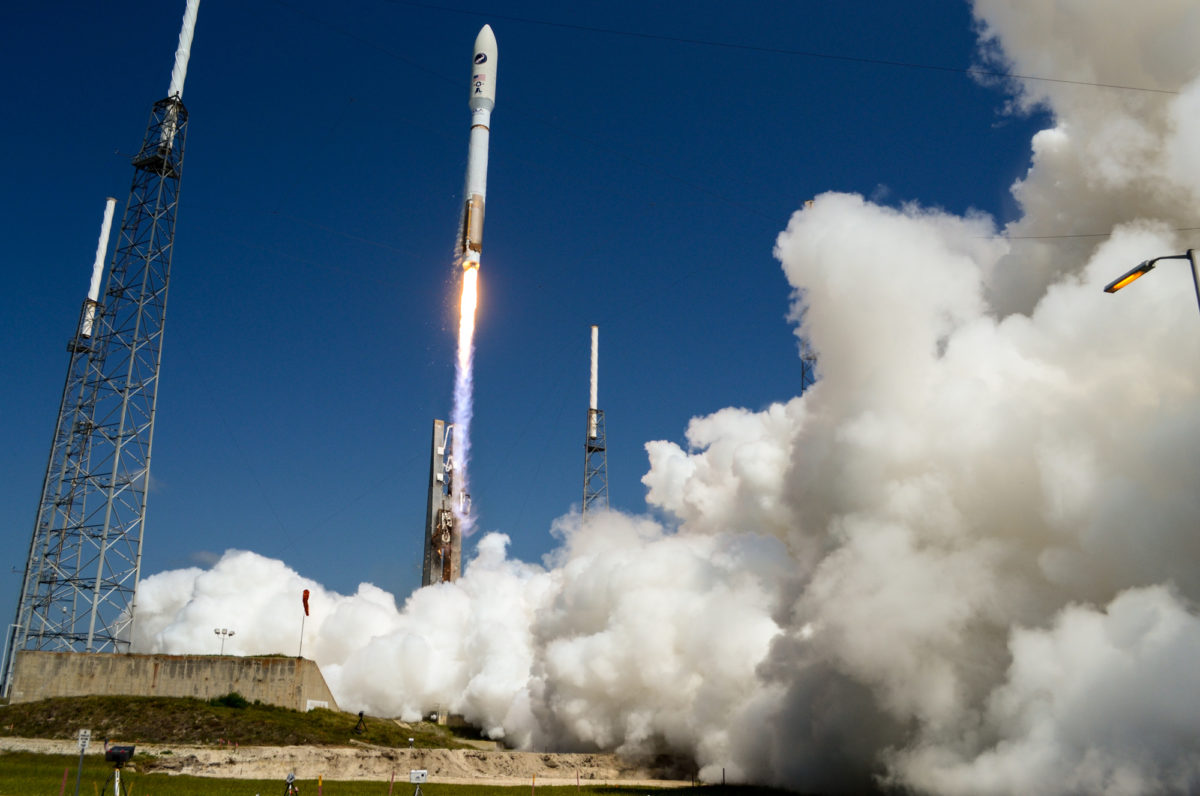Jason Davis • May 20, 2015
LightSail Sends First Data Back to Earth
The Planetary Society’s LightSail spacecraft is sending home telemetry data following a Wednesday commute to orbit aboard a United Launch Alliance Atlas V rocket. Deployment from the Centaur upper stage occurred at 1:05 p.m. EDT (17:05 UTC), and LightSail crossed into range of its Cal Poly San Luis Obispo ground station at 2:20 p.m. EDT (18:20 UTC). With the LightSail team on console, The Planetary Society staff gathered in Cocoa Beach, Florida to listen in as the first signals were received from space.
Shortly after the ground pass began, Cal Poly detected LightSail’s automated radio chirps.
Cal Poly thinks they see our signal! #LightSail RF signal with 15-second cadence!
— Jason Davis (@jasonrdavis) May 20, 2015The seven-and-a-half minute pass ended without any decoded telemetry, so the waiting began anew.
Ground pass is over. Cal Poly is now processing the RF signals to see if they can decode any telemetry. #LightSail
— Jason Davis (@jasonrdavis) May 20, 2015Good news arrived a few minutes later.
WE HAVE DATA! #LightSail pic.twitter.com/JTUMouZXst
— Jason Davis (@jasonrdavis) May 20, 2015You can download LightSail's first telemetry file here.
First impressions of the data showed most values were nominal or near predicted ranges.
Early take on data: mostly nominal. Batteries and temps close to expected ranges. Tumble rates X, Y, Z: -7, -0.1, -0.3 deg/sec. #LightSail
— Jason Davis (@jasonrdavis) May 20, 2015The team's only major concern is a line of telemetry showing the indicator switches for solar panel deployment have been triggered. (Look for line 77 in the telemetry file—the “f” is a hexidecimal value indicating all switches were released.) Under normal circumstances, the solar panels do not open until the sail deployment sequence starts, because the sails have a tendency to start billowing out of their storage cavities.
This telemetry reading, however, does not necessarily mean the panels are open. The switches were once inadvertantly triggered during vibration testing, so it’s possible they popped loose during the ride to orbit. We’ll know for sure after flight day four, when we test out the camera system. This is one time we don’t want to see a pretty picture of Earth—it would mean the panels are open.
The second ground station pass began at 5:49 p.m. EDT and lasted about five minutes. This time, Georgia Tech’s ground station listened.
The tracking pass is over. Georgia Tech reporting three full packets received! Cal Poly computers now processing the data. #LightSail
— Jason Davis (@jasonrdavis) May 20, 2015The next ground station pass occurs at 7:23 p.m. EDT, when LightSail crosses within range of both stations on the same orbit. The team is considering testing the uplink functionality of the spacecraft’s communications system. After that, the next pass occurs over Cal Poly at 9:01 p.m. This will be the final ground station contact for 12 hours.
In the meantime, the videographers and photographers that joined us in Florida have been pulling pretty pictures off their cameras. Here are a few highlights, including some outstanding footage from remote cameras near the launch pad.
LightSail Lifts Off On May 20, 2015, our first LightSail prototype launched from Cape Canaveral aboard an Atlas V rocket.Video: Video by Elliot Severn | Music by Jim McKeever


The Time is Now.
As a Planetary Defender, you’re part of our mission to decrease the risk of Earth being hit by an asteroid or comet.
Donate Today

 Explore Worlds
Explore Worlds Find Life
Find Life Defend Earth
Defend Earth

